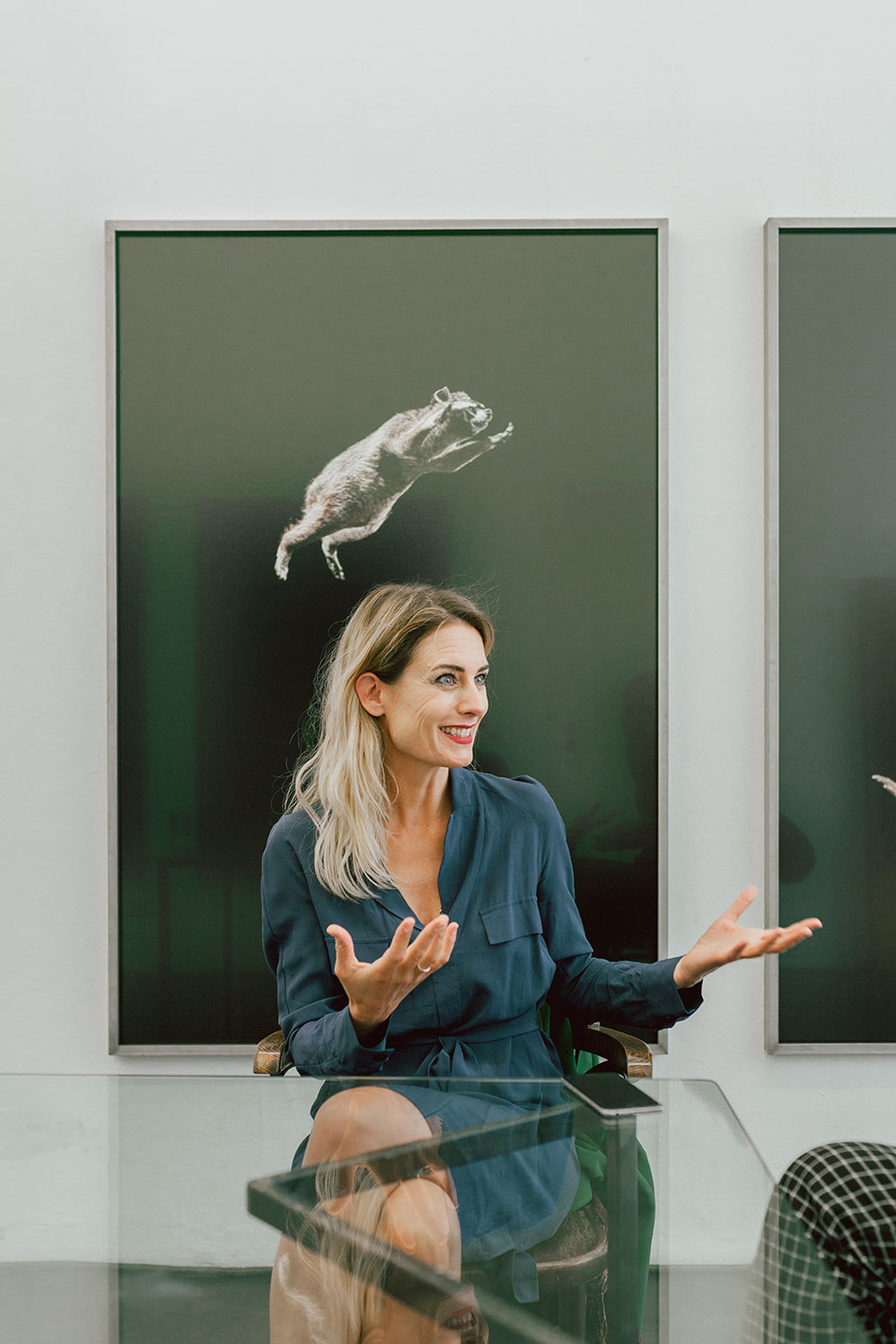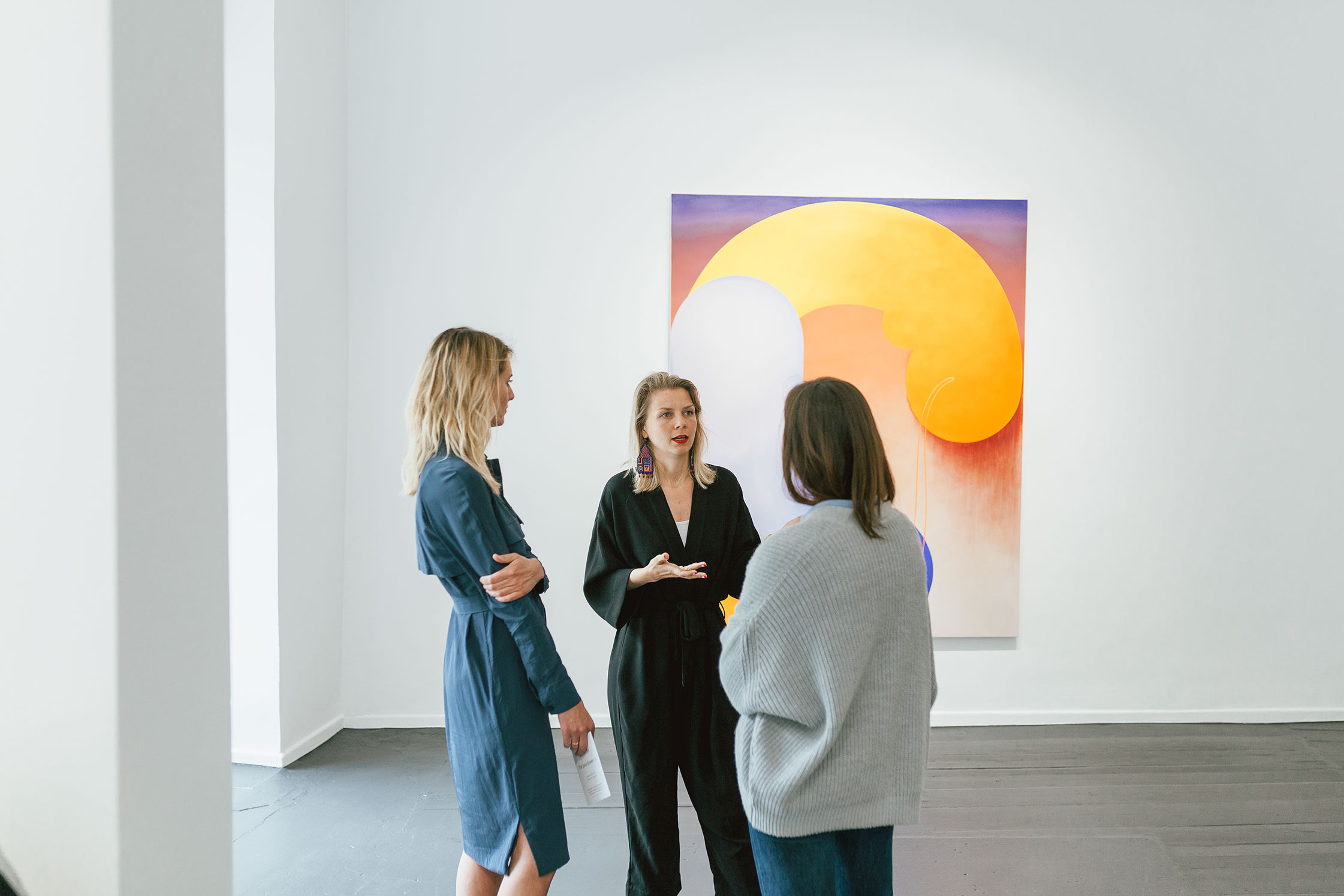Tackling gender inequality in the art and design world with a panel discussion that calls for change
As cracks appear in the glass ceiling, Alyse Archer-Coité, Silke Hohmann, Kristina Leipold, and Tanja Wagner introduce their female take on culture to The Sooner Now

Peering into a pair of resin lungs filled with debris and precious stones at Berlin’s Wentrup Gallery, Silke Hohmann looks completely at ease.
The Monopol editor already knows Mariechen Danz’s work well; she put the Irish artist on the magazine’s “Watch List” a few years ago and is delighted to see how far she’s come since then. “Last year, she was included in the 57th Venice Biennale,” says Silke, “It’s always great to see an artist you’ve supported from the early days progress and make their way.”
For Silke Hohmann, highlighting the voices of female artists is a conscious choice: since 2017, she has written 11 major articles for Monopol, eight of which were about women. Today, the art and design world recognizes that equal gender representation in exhibitions and publications is an integral part of what Silke calls “correcting art history” but it hasn’t always been this way. Starting out as an art and culture writer in her early twenties, Silke would receive pushback from her fellow professionals when she pointed out male-only shows. “I would always hear things like ‘Umm, no, we don’t choose by gender but by quality,’” she says. “Another thing I was told is that quotas are anti-feminist because everybody wants to be awarded for their achievements and not their gender.”
At The Sooner Now, Berlin Alyse Archer-Coité, Silke Hohmann, Kristina Leipold and Tanja Wagner have been discussing the role of women in the cultural landscape. More about the joint initiative from MINI and FvF at the end of this piece.


This implication—that a lack of representation is due to a dearth of female talent—has proven surprisingly hard to shake. When Tanja Wagner left her position as director of Galerie Max Hetzler to start her own gallery in 2010, she came across similar sentiments. “I was speaking with a female colleague of mine, another gallerist, and we were talking about female artists and she said, ‘I would love to show more but there aren’t any good ones,’” says Tanja, but rather than being disheartened by this viewpoint she took it as a challenge. “Her statement really triggered something inside me. I thought, Ok, go out and do your research and see whether it is really so hard to find female artists with something to say. Within six months I had five fantastic artists and that was the start of my gallery,” she recalls. Today, eight out of nine artists on her gallery’s roster are female—highly unusual in Germany where 80% of artists represented by commercial galleries are male—but Tanja deliberately chooses not to make too fine a point of this. “I think it’s fantastic that they’re female artists, but it’s really more about their positions and what they have to say. For me, it’s about having a global perspective, talking about issues that are really important in our society and the humanity of the individual,” she says.
“It would be my wish that we don’t have to discuss these things anymore, that having women in the art world is just normal.”
Kristina Leipold
As Program Director of A/D/O, a Brooklyn-based design institution including studio space and coworking spaces launched by MINI, Alyse Archer-Coité has a similar attitude to marketing the events she organizes. “I’ve never been to an event that said, ‘These are all white men talking about this subject – welcome,’” she says, laughing. Instead, A/D/O offers a broad program that doesn’t emphasize the gender of its speakers. “It’s working to normalize the idea that women might be in a space talking about something, and it doesn’t have to be highlighted—because that’s the real work, to use language to bring about change by sometimes just not saying as much,” Alyse adds. She also wants to move beyond the binary and recognize the needs of those who don’t identify with either gender, both in the workforce and as visitors to A/D/O. As a relatively new topic for many cisgender people (individuals whose gender identity matches the sex they were assigned at birth), a key component to representing the voices of the gender nonconforming has been an internal discussion about how employees talk to and refer to one another: “just reestablishing parameters and norms for the space,” Alyse explains.
“My perspective is that the US and some other countries in Europe are ten years ahead of Germany.”
Silke Hohmann
The desire to simply exist in the world irrespective of what, if any, gender you identify with is a common thread amongst the four interviewees: when asked what she would change about the world of art and design Kristina Leipold has one desire. “It would be my wish that we don’t have to discuss these things anymore, that having women in the art world is just normal,” she says. And if there’s a hint of frustration in her voice, it’s because in her new role as Head of Finance and Development in the female-led management team at Gropius Bau in Berlin, Kristina has been asked a lot about gender recently. The institution’s director, Stephanie Rosenthal, is one of eight women appointed to lead German arts institutions in 2018—others include Nikola Dietrich at Kölnischer Kunstverein and Susanne Pfeffer at MMK—roles that many hope marks the end of men’s unequal influence on arts and culture in the country.
It is clear, however, that Germany still has a way to go. Like Alyse (who worked for a time in Berlin), Kristina has been employed in both Berlin and New York, giving her an understanding of how gender is treated in both places. “I think that the US is very aware when it comes to the workspace and how you interact and communicate with each other, how you treat your colleagues and so on. This is something that I also experienced working here for Google, but I wouldn’t say it’s as common in Germany,” she says. Silke, who is also German, agrees: “My perspective is that the US and some other countries in Europe are ten years ahead of Germany,” she says.





“A lot of the issues we’re talking about now are an outcome of the devaluation of women’s work.”
Alyse Archer-Coité
One vital difference in which Germany does come out on top, though, is maternity leave. In the US there is no federally mandated policy for giving new parents time off compared to the 14 weeks of full-pay that German mothers can expect. “The US setup is a little less kind to women,” admits Alyse, “I think they [American companies] find pregnant women to be inconvenient and expensive and that’s something that has to change.” From her experience of working at Gropius Bau so far, Kristina believes that the exhibition space is family-friendly; as a publically-funded institution, it allows employees to adjust their working hours according to their needs (for instance, a parent could reduce their hours to sixty per cent and then increase them again after their child starts school). But for female artists, who are more like freelancers or CEOs of their own businesses, the view is not so rosy. One specific way artists with families are targeted is when it comes to residencies. “There are residencies that say on the webpage families are not allowed and for some artists, especially at the beginning, that is how they survive because they have to build up their practice and they don’t have a market yet,” explains Tanja.
No matter what country or culture we are talking about, women are still more often than not the primary caregivers in their families, meaning the careers of female artists are unduly affected by having children. Artists such as Marina Abramović, for example, have publically spoken out about choosing their careers over having children, but Tanja hopes it won’t be the same for the new generation. “Half of the artists that I work with are parents and it’s such an inspiration because they don’t have any real support. One of my artists had two children within four years and that’s when her career kicked off—there was hardly any institutional support for the shows and prizes she got. That’s something we can work on and support more,” she says.
Ultimately, this and many other problems for women in the cultural sector are related to something that affects women across all industries: the gender pay gap. It is commonly cited that, on average, women make 80 cents compared to every dollar men make. “A lot of the issues we’re talking about now are an outcome of the devaluation of women’s work,” says Alyse. “If women and men, or indeed anyone who identifies in any way in the workspace, has equal access to wealth then the decisions they make [about children] can really be their own and not based on an economic model that’s build for one gender. That would be a great baseline—and from there, who knows?”



Text: Chloe Stead
Photography: Daniel Farò; Robert Rieger

